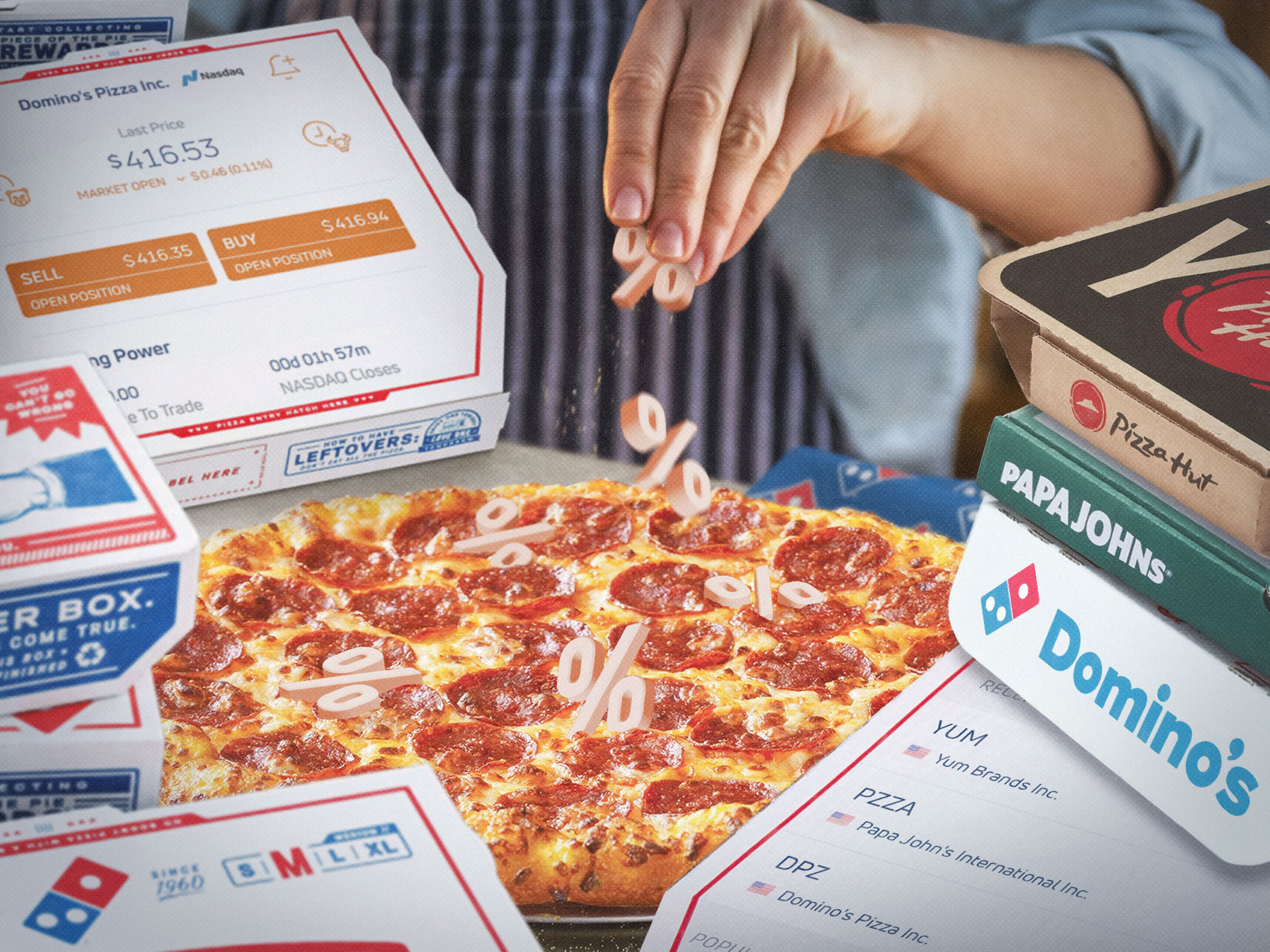“Nobody knows like Domino’s” goes the slogan for Domino’s Pizza (NASDAQ: DPZ), the largest U.S. pizza chain, with a 20% global market share.
The tagline may well be true: Domino’s business model is a winner. But that hasn’t done much for its stock price lately.
Shares have dropped 4% year to date and 2.5% over the last 12 months, lagging publicly-traded competitors Papa John’s (NASDAQ: PZZA) and Yum Brands (NYSE: YUM), which owns Pizza Hut. Keep in mind, of course, that Pizza Hut accounts for just 13% of Yum’s sales (it also owns KFC and Taco Bell).
Looking a bit longer-term, Domino’s shares have climbed 30.6% in total over the last three years, beating Papa John’s but slightly trailing Yum.
Over the past few years, almost all fast-food restaurants have suffered from inflation and stagnating personal income for the nation’s least wealth consumers, which have kept them eating grocery-bought food at home.
Domino’s tech and innovation capabilities
But this doesn’t take away from Domino’s strengths. Morningstar analyst Erin Lash is particularly impressed with its technology prowess and innovation. Domino’s tech capability is particularly important, given that more than 50% of the company’s global sales (85% of domestic sales) come through a digital channel
“Domino’s relentless pursuit of core process automation and data-driven decision-making strengthen its brand,” she said.
The company has access to point of sales data for the last 20 years. That includes customer order history, payment information, popular attachment items and promotional sensitivity information, “offering a more complete view of the customer than any competitor in the sector,” Lash said.
This allows for “a level of customization, market-level pricing optimization, and streamlined promotional activity that peers cannot emulate,” she said
Lash also likes the company’s order sequencing algorithm, its ability to handle orders over any electronic device, driver tracking, and AI-supported regional pricing and advertising decisions.
Getting creative
Other key innovations include delivery hot bags, airtight dough storage, non-traditional delivery locations, and high-speed ovens. All this pushes “constant operational, financial, and customer experience improvements,” Lash said.
Meanwhile, almost all of Domino’s restaurants are franchised, so the company receives franchise fees and has limited capital expenditures. It has done a good job helping its franchisees make money, analysts say.
The company released solid earnings for the quarter ended Sept. 7. Sales rose 6.3% from a year earlier to $4.7 billion, helped by a new stuffed-crust pizza and a promotion for a $9.99 pizza with any toppings. Operating income gained 12%, and the operating profit margin grew to 19.5% from 18.4% a year earlier. Domino’s global store count climbed 3.4% to 21,750.
Domino’s is doing better in the U.S. than overseas, with U.S. same-store sales increasing 5.2% in the latest quarter, compared to 1.7% overseas. Domino’s struggled in Japan and Australia amid economic sluggishness. However, potential is strong in India, China and Latin America.
Looking at the bigger picture, despite the company’s strength, it may not be ready for immediate takeoff. Inflation and economic woes for less wealthy consumers could hurt Domino’s in the U.S.
“Our [fourth-quarter] comparisons could be pressured by the macro environment in the U.S., which we have seen intensify across the restaurant industry at the start of our fourth quarter (Sept. 8),” Domino’s CFO Sandeep Reddy said in its latest earnings call.
So no one knows what the short term holds for Domino’s.




Comments